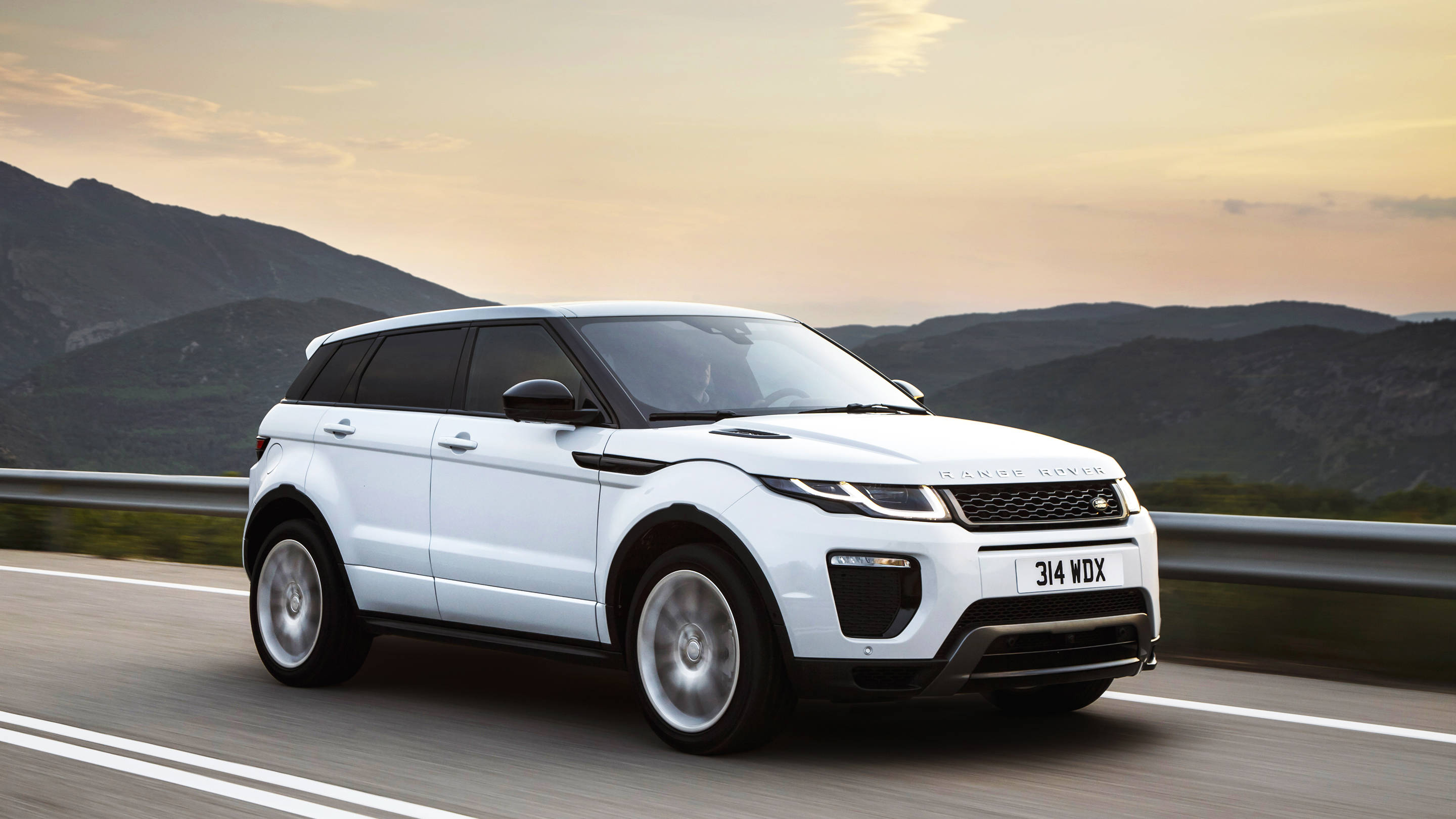
Will the New Fleet of Eco-conscious SUVs Turn Consumers On?
Environmental activists hope to convert SUV fans to these eco-friendly alternatives
There tend to be two distinct views on electrification amongst car people. Half laud the onrush of hybrids or fully electric vehicles as desperately needed to preserve ecology and as essential evolution of human travel. The other half mourn the fading internal combustion engine and an envisioned loss of power, capability, performance and entertainment.
In (unofficial) group therapy sessions held in oil change waiting rooms across the country, dutiful therapists raise the spirits of gasoline-devotees by explaining that hybrid supercars like the Porsche 918, the oncoming Ferrari and Bosch V6 electric drivetrain and Lamborghini’s LB48H guarantee neck-snapping speed and handling will survive this storm of watts and volts.
So, the only question remaining for the gearheads is whether that other testosterone-soaked genus of vehicles—the big cargo-laded, off-road dominating SUV–will cast a shadow in a plug-centric world. The following four early entrants into the hybrid SUV gambit guarantee the dirt roads, rocky rivers and snowy foothills won’t be free of tire tracks in the future.
2019 Range Rover Sport PHEV
We start at the apex of the consumer SUV kingdom with this Range Rover. Under its current TATA ownership and brand direction, no other vehicle on the world’s roads combines style, luxury, comfort and absolute functionality as well as anything coming off the Land Rover assembly lines. Whether it’s the Velar, Discovery or this Sport PHEV out of the company’s Range Rover line, these SUVs are so good this reviewer extends his driving route and seeks traffic in peak commute times—looking for excuses to stay behind the wheel.The PHEV (Plug-In Hybrid Electric Vehicle) aids its gasoline engine with a battery aid that plugs in from the car’s nose. The cord needs about 12 to 14 hours to power the vehicle completely using a home charging cable. Once at full charge, the engine can run on full EV (Electric Vehicle) mode for up to 31 miles with zero emissions. When the battery joins with the combustion side, the Sport PHEV can serve up mileage numbers north of 40 mpg—an appealing boost to standard SUV fuel consumption stats.
More than 300 fully electric vehicles across all international automakers are en route with 46 EV models arriving in 2018, 70 in 2020 and 258 in 2025
All of this forward thinking, environmental friendly engineering comes with the Range Rover’s reputation for all-terrain supremacy intact. The SUV’s drive mode selector allows the operator to choose everything from Comfort to Dynamic (Sport) to terrain specific settings for off-road conditions. If the driver lacks the experience or the willingness to do the selecting, that same AI will automatically choose the mode the vehicle needs to climb any mountain or fjord any stream.
The entire package is driving perfection. There’s a supreme confidence that comes with driving a Range Rover Sport. It’s more than just the comfort of its leather-strewn interior and the suite of driver aiding technology. It’s a direct result of knowing the SUV has the ability to outrun most of the other lesser beasts on the road easily and the guts to conquer any road surface.
2019 Lexus NX 300h
Lexus jumped on the electric express train earlier than many of its rivals, thanks to its intimate relations with Toyota. Despite its clunky aesthetics and shaky build quality, the Toyota Prius remains the highest-selling hybrid vehicle of all time. The success of the Prius’ gas/electric powertrain made it that much easier for Lexus to borrow the tech and import it over to its higher end designs. Lexus takes that hybrid concept, ups the tech, smooths out the presentation and installs it into an attractive, compact, luxury SUV.The NX is a scaled down version of Lexus’ top seller, the RX. The automaker’s designers set out to design a crossover SUV aimed specifically at city drivers that want a little more rugged, cargo capable transportation that might exist a little easier in tight city traffic and amidst restricted parking options.
The hybrid version of the NX starts around $38,835. The aggressively styled, small SUV blends Prius’ familiar battery capability with an inline four cylinder gasoline engine. All totaled up, that power plant offers 194 horsepower and overall fuel economy of 31 mpg. In the tradition of the Prius, the NX engine and battery blend work in constant cooperation — offering an overall total driving range of about 459 miles. With a fully charged battery, a selectable full EV mode can take over and drive the NX gasoline-free for 10 or so miles before the fossil fuel half has to jump in again.
A continuously variable speed automatic transmission sends the electricity-enhanced power to the standard Lexus all-wheel-drive. The resulting drive is smooth and capable, especially when notched into the Sport Mode.
The era of any Lexus serving as the dull, stuffy, haughty relative of a Toyota is long since over, and the edgy, angled appearance of the NX proves that. With its broad, gaping grille and stealthy, jutting fenders and haunches, this SUV should show the gasoline addict that he need not fear the loss of good-looking SUVs in the age of the electron.
2019 Volvo V60 T8 Plug-In Hybrid
In eras past, when the off-roading risktaker dude grew up enough to take on the responsibility of marriage and a family, a new sort of more sensible, but equally masculine ride—the station wagon—would take ownership of his driveway. Sadly the wagon all but faded away from the car world in this age of the dominant crossover.
Still, there’s still one gleaming ray of sunlight parked atop of Family Truckster Hill—the Volvo V60. Easily the most beautiful station wagon ever imagined or built, the V60 leaves car lovers wondering what other automakers could do if they didn’t become so obsessed with pocket SUVs. While perfecting the lines of family carrying utility, Volvo built the new V60 T8 – an ultra-ultra-capable plug-in variant for the eco-conscious clan.

It Is Time to Invest in the Future of Cars
The all-electric car is taking over the car industry.
A surprising looker in every regard, this V60 shares its scalable architecture signatures with the XC60 SUV. The Sportswagon comes to showrooms in T6, T5 and T4 gasoline models and front-wheel drive D3 and D4 diesels with a choice of manual or automatic transmission. However, it’s the T8 AWD Gas Plug-In hybrid that proves a guy can be environmentally conscious while honoring the traditions of the dads that came before him.
The T8 version’s power train includes a turbocharged, 2.0-liter, inline four cylinder engine with a 10.4-kilowatt-hour battery pack and an electric motor aiding the rear axle. The resulting alchemy offers 390 horsepower and 472 lb-ft of torque. That’ll get you from 0-60 mph in just a tick south of five seconds.
Of course, the V60 is a Volvo, and that means its modern exterior styling and high-tech power plant wrap around an elite, thoroughly cultivated interior. Volvo always works to perfect its unique look of northern European simplicity and elegance in the cockpit. Lined in wood and dominated by a big, vertical touchscreen in the center console, the V60 offers excellent sound cancellation, a complete infotainment setup and an environmental control system that maintains interior temperatures while filtering dust and germs. Add all that up you have what Volvo calls its Scandinavian Sanctuary.
2020 Range Rover Evoque PHEV
We end where we began—with the newest vehicle (pictured above) from the Land Rover family. The entirety redesigned Evoque offers new styling and improved technology that confirms the automaker’s commitment to full line electrification.
The original Evoque debuted for Range Rover in 2011 and sold well as one of the SUV industry’s first genuine crossovers. A sort of wedding of a Land Rover and a hatchback, the Evoque reached out to a new market for the company—folks looking for the Range Rover badge on a smaller, more affordable vehicle. Offering the brand’s expected sophisticated and off-roading ability in a smaller frame, the vehicle earned the right to see its complete redesign into the new hybrid version arriving for 2020.
During an extended test drive through southern Greece, the $43,645 Evoque distinguished itself while showing off what makes the new version that much better. First of all, the company’s designers forged an entirely new exterior for this 2020 model. The first conception of Evoque came off a little too small and a little too flattened around the edges to stand up like a true Range Rover. It looked a little bit like a pretender in the royal family.
Could Owning a Car Become a Thing of the Past?
BMW and Mercedes-Benz are investing in the car-sharing market

The ride never disappoints, whether cruising on a Grecian highway or tearing down moderately challenging off-road stretches. This may not be the best Range Rover for rocking over boulders, but it can handle dirt and mud with aplomb.
The hybrid version of the R-Dynamic Evoque trim package includes a 2.0 liter turbo four-cylinder engine with intertwined hybrid technology. The total package offers 296 horsepower and 295 lb-ft of torque. If moving under 11 mph, the Evoque PHEV can deactivate the engine and run entirely on battery power, making the machine a fully electric vehicle for short hauls.
Don’t think the use of that term “short haul” will prove mandatory in the evolving plug-in and hybrid world. As technology improves across the automotive industry, car buyers will only see longer runs and all types of driving ranging from the practical to the theatrical further improved transformed by electricity.







